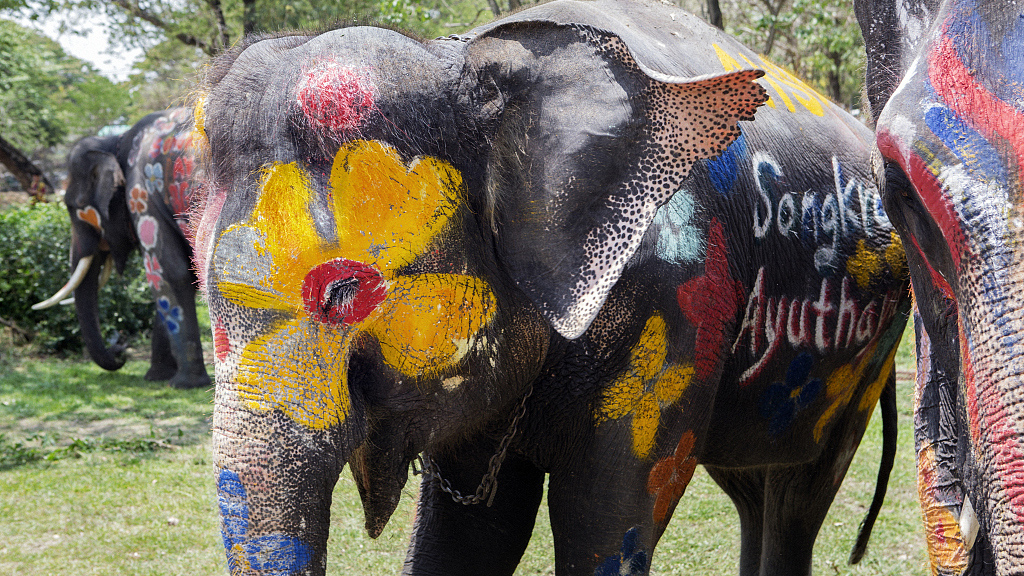
The past month or so has been mostly wretched for tourism in Asia.
The novel coronavirus outbreak, which began in China but has since spread both within and outside the continent, has severely curtailed travel and placed the tourism-dependent economies of Southeast Asia, in particular, in a vulnerable position.
ING, the Amsterdam-based multinational banking and financial services corporation, estimates that economies in the region could lose 105-115 billion U.S. dollars in gross domestic product (GDP) from the industry this year.
Tourism in Asia has thrived on the back of the voracious appetite for travel among China's fast-growing middle class.
According to GlobalData, a London-based research and consulting company, the key destinations for outbound travelers from the Chinese mainland are Thailand, Japan, South Korea, Vietnam, Singapore, Malaysia and Cambodia in southeast Asia, China's own Hong Kong, Macau and Taiwan, as well as the U.S. and France.|

Thailand's elephant parks have seen few foreign tourists recently. /VCG
Not only has travel to and from China plummeted since January because of restrictions imposed as a result of coronavirus but many popular resorts and attractions across Asia report that they are virtually empty as a result of thousands of cancellations by nervous travelers from diverse sources.
Future bookings have also dropped.
'Holidays in Hell'
ING's figures represent a worst-case scenario but they point to real trouble ahead.
"If we assume that tourism to and from China basically grinds to a halt in 2020, and extra- regional tourism also diminishes, then the cost to the region from lost tourism revenues alone is approximately $105-$115 billion," said Robert Carnell, the multinational's chief economist for Asia-Pacific.
In the report titled "Holidays in Hell," Carnell said the research assumed zero tourism receipts for Asian countries from inbound China visitors as it sought to calculate the total loss from the epidemic.
"That's obviously a gross simplification, but it fits a scenario where the epidemic lingers long after it peaks. Official travel restrictions may be slow to be removed, and travelers may remain wary long after it is safe for them to travel again," the report said.
In 2018, residents of China made more than 53 million overseas visits to other parts of Asia. Ten million alone journeyed to Thailand, though according to ING, South Korea actually received a higher proportion of its tourists from China – 34 percent of all its arrivals.
Strong intra-regional travel
Japan was not far behind at just over 30 percent, with Cambodia and Vietnam also near the top, along with Thailand in fifth place at 27.5, probably reflecting its status as a slightly more diversified global tourist hub.
But the traffic can be two-day in some cases as 80 percent of tourism in Asia is intra-regional. As part of its analysis, ING included spending by outbound tourists to China, as well as the inbound Chinese tourists that will no longer be visiting countries in the region.

Visitors ride on a bamboo train in the city of Battambang in Cambodia, which has a heavy dependence on tourism. /VCG
The report said that there were only about one million more Chinese visitors to South Korea than South Korean visitors to China – 4.2 million, the most from Asia – in 2018.
ING speculates that the somewhat surprising statistic may soften the blow to South Korea's GDP from lost Chinese tourism revenues, especially if its citizens don't travel elsewhere instead. The rising number of coronavirus cases in South Korea may keep them at home anyhow because the country is now also subject to travel restrictions.
Also holding its breadth is Cambodia where tourism is among the top two industries. The New York Times reported this week that in the northwestern city of Siem Reap, home to the ancient ruins of Angkor Wat, the usually busy Sala Lodges hadn't received a new booking in three weeks.
'Most important takeaway'
In Vietnam, the industry contributes a handy 6-7 percent of GDP.
GlobalData expects that Southeast Asian destinations will each lose at least three billion dollars in tourism-related revenues.
In China itself, some hotel chains have closed properties and Airbnb has suspended some bookings as airlines have slashed flights and countries have banned travelers from the world's second-largest economy. On the brighter side, some attractions are resuming openings on a limited scale as the threat of the virus recedes in the country.
But China's economy has proved itself to be very resilient. Some of its neighbors are not in such a position and must by now surely be aware that it is dangerous to put too many eggs into one basket.
"The most important takeaway for the tourism industry from the coronavirus outbreak is to rationalize the portfolio by reducing the reliance on China outbound tourists," said Animesh Kumar, director of travel and tourism consulting at GlobalData.
Top photo: Vietnam's Halong Bay, a UNESCO World Heritage Site and a top tourist attraction. /VCG
 简体中文
简体中文

